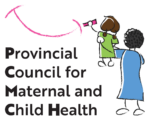
Sept. 2023 | Issue 4
Earlier this year, the Provincial Council for Maternal and Child Health (PCMCH) concluded an evaluation of the Safe Administration of Oxytocin project. A survey initiated in 2022 asked Ontario hospitals about their use of oxytocin, a high-alert medication used to start or advance labour intravenously. Oxytocin administration has been identified as a high-risk area of practice. The survey examined the degree of uptake and effectiveness of the recommendations outlined in the Safe Administration of Oxytocin report, developed by PCMCH in 2019 with the objective of reducing the misuse and/or mismanagement of oxytocin.
PCMCH followed up with three surveyed facilities that each have different Levels of Care designations – Lake of the Woods District Hospital (Kenora, Level 1), Bluewater Health (Sarnia, Level 2a) and Sunnybrook Hospital (Toronto, Level 3). All three found that the recommendations helped improve their oxytocin administration practices and promote the safest possible care for patients being induced or augmented with the drug.
“Staff are always striving to follow best practices and provide high-quality care,” says Krista Turner, Professional Practice Supervisor and former Manager of the Maternal Infant Child unit at Bluewater Health. “They felt more confident utilizing PCMCH’s best practices for oxytocin administration, and patients felt more informed and involved in their care.”
Several survey respondents stated that increasing safety around oxytocin use is a quality improvement priority for their facilities. At Bluewater Health, oxytocin was prioritized when the drug was identified as part of the risk assessment checklists provided by the Healthcare Insurance Reciprocal of Canada (HIROC). “It was from this that we decided to implement the PCMCH recommendations,” explains Turner. “We used the toolkit to identify gaps in current practices and develop checklists, education, documentation and standardized oxytocin protocols to reduce misuse and mismanagement risks.”
Updated approaches, new tools
HIROC was among the partner organizations that contributed to the development of the Safe Administration of Oxytocin report – their review of obstetrical malpractice claims was key to informing the recommendations. Another important partner was the Institute for Safe Medication Practices (ISMP Canada). Leigh Andrews, an Advanced Practice Nurse in the DAN Women and Babies Program at Sunnybrook Hospital, says that, in 2019, the facility completed audits and a review of safety reports based on the ISMP Canada high-alert medication report. This examination supported the enrichment of quality care by highlighting ways to reduce oxytocin pump errors, hyperstimulation and IV-line safety concerns. “We reviewed the PCMCH document and implemented an oxytocin quality initiative,” Andrews says. “This initiative included the introduction of an oxytocin checklist, standardized order sets, bright oxytocin labels for the IV bag and IV lines, pump in-services for staff, as well as updates to our standards of care to align with recent SOGC guidelines.”
Similarly, Bluewater Health acted on recommendations around labelling, verifying that all oxytocin medication was labelled with high-alert notifications. “We also reviewed our escalation of care and high-alert policies,” says Turner. “In addition, all of our IV pumps were updated with soft and hard limits to support best practices.”
Accompanying the report is an Implementation Toolkit, which includes resources such as a Gap Analysis Tool, standardized order sets and safety checklists. “We’ve found the Pre-Use Oxytocin Safety Checklist and the In-Use Oxytocin Safety Checklist the most useful,” says Elizabeth McGogy, Maternity Unit Manager at Lake of the Woods District Hospital. “We’ve also included a written consent, instead of just documenting verbal consents, for patients and developed an oxytocin information sheet.”
Measurement of maternal and perinatal outcome indicators from the BORN Information System were used to supplement the survey results to determine the impact and clinical outcomes of the implementation of the Safe Administration of Oxytocin recommendations and tools. The perinatal outcome indicators assessed were related to oxytocin induction and augmentation, vaginal births, caesarean section, and postpartum hemorrhaging and fever. Neonatal outcome indicators were related to Apgar scores and arterial cord blood pH, as well as Neonatal Intensive Care Unit admissions. “At Bluewater Health, over the past year, our proportion of women who were induced with an indication of post-dates and were less than 41 weeks gestation at delivery has dropped from 20.1 to 7.68,” reports Dr. Baljit Singh, Medical Director for Bluewater Health’s Maternal Infant Child program. “This indicates that the changes we’ve implemented have contributed to our success in reducing rates of oxytocin inductions.”
Safety increased, errors decreased
The PCMCH evaluation survey found hospitals stating that patient safety has increased and errors have decreased. “The birthing experience has been enhanced at Sunnybrook by way of decreased emergency interventions related to pump errors or hyperstimulation,” Andrews says. “And staff feel more confident in the use of oxytocin and management of the induction or augmentation of labour. We have been acknowledged by our internal Medication Safety Sub-Committee, which regularly reviews the hospital’s standards and ISMP Canada suggestions, for two years of error-free use of oxytocin.”
All Ontario hospitals using oxytocin are encouraged to review PCMCH’s recommendations and consider how they can introduce positive changes that are felt by patients and staff. “Changes we’ve made based on the guidelines have decreased the questions we are asked because patients feel more informed and have an increased comfort level with our approach,” says McGogy. “Staff also say there is increased collaboration with physicians when decisions are being made around whether it is appropriate to move forward with oxytocin.”
Supporting patient safety and decreasing administration errors remain the goals of the Safe Administration of Oxytocin initiative as implementation and outcomes continue to be monitored and assessed.
View the Safe Administration of Oxytocin recommendations report and Implementation Toolkit here.
Return to In This Issue
